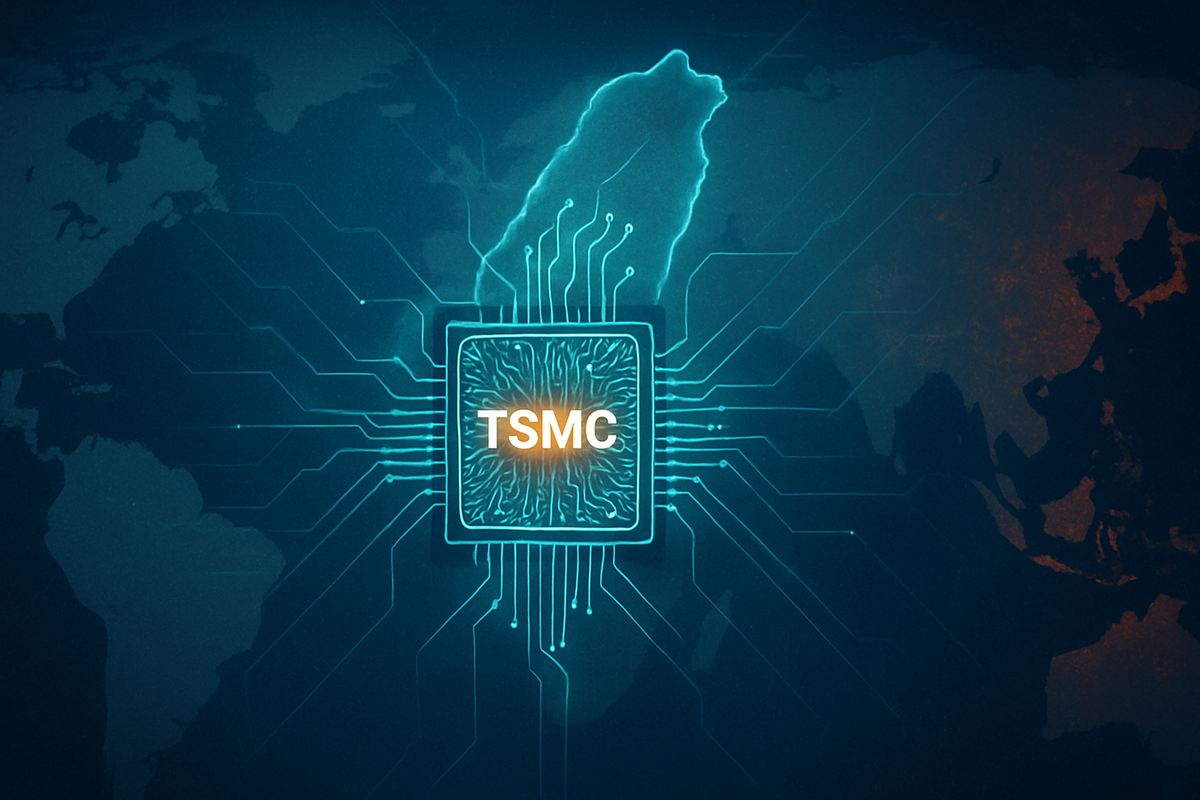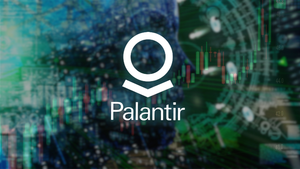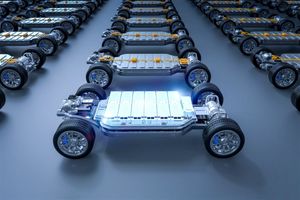
In the intricate tapestry of global finance and technology, one company stands as an indispensable, yet often understated, linchpin: Taiwan Semiconductor Manufacturing Company (TSMC). This Taiwanese powerhouse, the world's largest independent semiconductor foundry, manufactures over half of all semiconductors globally and an astounding 90% of the world's most sophisticated chips. This technological supremacy not only underpins the modern digital economy but also places Taiwan at the very heart of an intense geopolitical struggle, effectively creating a "silicon shield" that shapes strategic interactions between major global powers regarding chip production.
The immediate implications of TSMC's concentrated dominance are profound. Any disruption to its operations, whether from natural disasters, political instability, or armed conflict in the Taiwan Strait, would trigger a catastrophic ripple effect across global technology and economic stability. This vulnerability has ignited a fierce race among nations to secure their semiconductor supply chains, transforming chip production from a purely commercial endeavor into a critical national security imperative, with Taiwan's fate intricately linked to the world's access to advanced technology.
The Indispensable Foundry: TSMC's Rise and Global Reach
TSMC's operational scale is nothing short of colossal, characterized by its sheer production capacity, staggering revenues, and a vast ecosystem of customers. In 2023, the company reported consolidated revenue of US$69.30 billion, with net income reaching US$26.88 billion. Its manufacturing facilities, including advanced GIGAFABs in Taiwan and subsidiaries abroad, boast an annual capacity exceeding 16 million 12-inch equivalent wafers. Critically, advanced technologies (7-nanometer and beyond) accounted for 58% of its total wafer revenue in 2023, rising to 74% in Q2 2025, underscoring its leadership in cutting-edge chip production for segments like High-Performance Computing (HPC) and Artificial Intelligence (AI).
Founded in 1987 by Morris Chang, TSMC (NYSE: TSM) pioneered the "pure-play" foundry model, a revolutionary concept that allowed companies designing chips (fabless companies) to outsource manufacturing without the prohibitive costs of building their own fabrication plants. This model fostered trust by ensuring TSMC did not compete with its customers, a strategy that fueled the growth of tech giants worldwide. Initial funding came from a collaboration between the Taiwanese government, Dutch tech giant Philips, and private investors. Over decades, TSMC rapidly advanced its process technologies, moving from 8-inch wafers in 1993 to mass production of 3-nanometer chips by 2022/2023, cementing its position as the undisputed leader in advanced semiconductor manufacturing.
Key stakeholders in TSMC's operations extend beyond its customers to powerful governments. The Taiwanese government remains a foundational investor and the largest individual shareholder. The U.S. government, through initiatives like the CHIPS Act, is a significant stakeholder, incentivizing TSMC's multi-billion-dollar investments in Arizona. Similarly, the Japanese and German governments have become stakeholders as TSMC expands its footprint in their respective countries, driven by a global push for supply chain resilience. This intricate web of governmental and corporate interests highlights TSMC's unique position as a geopolitical asset.
The industry's reaction to TSMC's strategic importance has evolved from initial recognition of its innovative business model to a scramble for supply chain security. The pure-play foundry model enabled a new era of semiconductor design, allowing a flourishing ecosystem of fabless companies. Today, TSMC's dominance in advanced chip production, controlling approximately 90% of the world's most sophisticated chips and a "well north of 90%" market share in advanced AI chips, means that its capacity and technological roadmap are closely watched by its elite roster of customers, including Apple Inc. (NASDAQ: AAPL), NVIDIA Corporation (NASDAQ: NVDA), Advanced Micro Devices, Inc. (NASDAQ: AMD), Qualcomm Inc., and Broadcom Inc. (NASDAQ: AVGO). In response to surging global demand and geopolitical concerns, TSMC has embarked on aggressive expansion, with multi-fab projects in Arizona (USA), a second fab in Kumamoto (Japan), and a new facility in Dresden (Germany), alongside continued significant investments in Taiwan for 2nm and 1.6nm production.
The Shifting Sands: Who Wins and Who Loses
TSMC's critical role in global semiconductor geopolitics creates a complex landscape of winners and losers, reshaping the fortunes of public companies across the tech spectrum. The desire for supply chain diversification, fueled by geopolitical tensions and the lessons of pandemic-induced shortages, is a primary driver of these shifts.
Among the potential winners are TSMC's direct competitors, albeit with significant caveats. Samsung Foundry (KRX: 005930, OTC: SSNLF), as TSMC's closest rival, stands to gain from diversification efforts, especially with its substantial investments in U.S. chip manufacturing. Similarly, Intel Foundry Services (IFS) (NASDAQ: INTC) is a major beneficiary of government incentives like the U.S. CHIPS Act, aiming to re-establish itself as a leading-edge foundry. While TSMC remains dominant, these players are positioning themselves as viable alternatives. Companies focused on mature process nodes, like GlobalFoundries (NASDAQ: GFS) and United Microelectronics Corporation (TWSE: 2303), could also benefit from increased demand for non-leading-edge chips crucial for automotive and IoT applications. Furthermore, the entire ecosystem of semiconductor equipment and materials suppliers, such as ASML (NASDAQ: ASML), Applied Materials (NASDAQ: AMAT), Lam Research (NASDAQ: LRCX), and KLA Corporation (NASDAQ: KLAC), are direct beneficiaries of the global push to build new fabs, as their specialized tools and materials are indispensable for chip production. Electronic Design Automation (EDA) software companies like Synopsys (NASDAQ: SNPS) and Cadence Design Systems (NASDAQ: CDNS) also maintain a critical role as chip design becomes increasingly complex. Paradoxically, TSMC (NYSE: TSM) itself can be considered a winner. Its unparalleled technological leadership ensures continued demand, and its strategic global expansion, often backed by government subsidies, helps mitigate geographic concentration risks and secures long-term market access.
Conversely, several entities face significant risks and could be considered losers. Fabless semiconductor companies heavily reliant on a concentrated TSMC supply are particularly vulnerable. Major customers like Apple Inc. (NASDAQ: AAPL), NVIDIA Corporation (NASDAQ: NVDA), and Advanced Micro Devices, Inc. (NASDAQ: AMD), while having deep relationships with TSMC, face severe supply chain risks if production in Taiwan is disrupted. Any interruption could lead to production setbacks, delayed product launches, and substantial financial losses. Chinese fabless semiconductor companies, such as HiSilicon and those supplying Xiaomi (HKEX: 1810), are also significant losers due to U.S. export controls and restrictions on advanced manufacturing equipment and EDA software, severely limiting their access to cutting-edge chip technology and impacting their global competitiveness. Downstream electronics manufacturers, including automotive giants like Tesla (NASDAQ: TSLA), General Motors (NYSE: GM), and Ford (NYSE: F), and consumer electronics companies like Dell (NYSE: DELL) and HP (NYSE: HPQ), also face vulnerabilities from potential chip shortages and price volatility, as demonstrated during the recent global chip crisis. Finally, any company with significant exposure to U.S.-China trade tensions, particularly those caught in the crossfire of escalating tech rivalry, faces increased uncertainty, higher compliance costs, and potential loss of market access.
Wider Significance: Technonationalism and a Fragmented Future
The geopolitical role of TSMC is not merely a corporate concern; it is a central pillar in broader industry trends, shaping national policies and potentially redrawing the map of global technology leadership. At its core, TSMC's dominance fuels the rise of technonationalism, where nations prioritize domestic technological capabilities as essential for economic growth and national security. The intense U.S.-China rivalry has accelerated this trend, with both superpowers investing heavily to reduce reliance on foreign entities for critical technologies, particularly semiconductors. This era has been likened to historical arms races, underscoring the strategic imperative placed on chip technology.
The global push for supply chain resilience is another direct consequence of TSMC's concentrated advanced manufacturing in Taiwan. The COVID-19 pandemic starkly exposed the fragility of global supply chains, leading to widespread chip shortages that crippled industries worldwide. In response, TSMC has embarked on a strategic diversification of its manufacturing footprint, with significant projects in the United States (Arizona), Japan, and Germany. These efforts aim to enhance operational continuity and mitigate the risks associated with geographic concentration. However, replicating TSMC's scale, technological expertise, and integrated supply chain outside of Taiwan presents immense challenges, requiring colossal investments in infrastructure, talent, and time.
These trends have profound regulatory and policy implications. The U.S. CHIPS and Science Act, enacted in 2022, provides substantial subsidies and incentives for domestic chip production, explicitly aiming to reduce dependency on foreign manufacturing. TSMC's multi-fab project in Arizona, partly supported by this act, is a direct outcome of this policy. Similarly, the EU Chips Act, approved in 2023, mobilizes over €43 billion to strengthen Europe's semiconductor capabilities, leading to TSMC's investment in a Dresden, Germany, foundry. These acts represent a concerted global effort to de-risk supply chains and achieve a degree of "technological sovereignty."
Historically, the current dynamics surrounding TSMC and semiconductors draw parallels to instances where control over critical resources translated into significant geopolitical leverage. The "technonationalist era" echoes mid-20th-century arms races, highlighting technology as a key battleground for global power. The weaponization of energy resources, such as Russia's use of natural gas, also provides a relevant comparison, illustrating how vital resources become embedded in foreign and security policies. TSMC's indispensable position, while not a natural resource, functions as a critical technological choke point, granting Taiwan a unique form of leverage in a fragmented global economy where "geopolitics trumps capital markets." The ripple effects extend to fabless chip design companies like Apple (NASDAQ: AAPL), NVIDIA (NASDAQ: NVDA), and AMD (NASDAQ: AMD), whose innovations are directly tied to TSMC's manufacturing prowess, making them deeply interdependent on its strategic decisions and global expansion.
What Comes Next: Navigating a Fractured Future
The future outlook for TSMC's geopolitical role is one of continued complexity, marked by deeper supply chain fragmentation, intensified "technonationalism," and a delicate balancing act between technological leadership and geopolitical stability.
In the short term (next 1-3 years), TSMC will continue to navigate escalating U.S.-China tensions. The company is actively aligning with U.S. policies, phasing out Chinese equipment from its 2nm production lines by 2025 and halting advanced chip shipments to certain Chinese entities to comply with export restrictions. The progress of its overseas fabs in Arizona and Japan will be closely watched, with the first Arizona fab for 4nm technology commencing production in early 2025. Taiwan's resolve to maintain its "silicon shield" by keeping its most cutting-edge R&D and the majority of its production capacity domestically will also be a key factor. A significant short-term consequence will be rising chip prices, with TSMC planning 5-10% increases for advanced nodes and a potential 50% surge for 2nm wafers, driven by the higher operational costs of diversified manufacturing locations.
Looking further into the long term (3+ years), TSMC's strategic pivots will involve continued geographic diversification beyond the U.S. and Japan, with a new European site in Dresden, Germany, and exploration of a "gigafab" in the United Arab Emirates. However, TSMC aims to retain its most advanced R&D and cutting-edge production (like 2nm and 1.6nm) in Taiwan, balancing global presence with domestic technological leadership. The company will also deepen its focus on advanced process nodes and packaging technologies like CoWoS, critical for the exploding demand in AI and HPC, with AI-related applications expected to double in 2025 and grow at a mid-40% CAGR for the next five years. Nations, in turn, will continue their strategic pivots, with the U.S. leveraging the CHIPS Act, the EU pushing its Chips Act, and China accelerating its self-sufficiency drive through initiatives like the "Big Fund 3.0." Emerging markets like India and Vietnam are also attempting to position themselves as alternative chip production hubs, though they face significant challenges.
Several scenarios and outcomes could unfold. If Taiwan stability continues with diversification, TSMC maintains its core R&D in Taiwan while successfully diversifying some production globally. This enhances supply chain resilience but leads to higher manufacturing costs and chip prices. The most disruptive scenario involves increased cross-strait tensions or conflict. Any interruption to Taiwan's semiconductor sector would be a catastrophic blow to the global economy, making Taiwan's "silicon shield" a powerful deterrent against full-scale military action. Another possibility is accelerated technological decoupling and regionalization, leading to two distinct technological ecosystems (U.S.-allied and China-dominated), resulting in economic fragmentation, inefficiencies, and potentially slowed innovation. Finally, successful global diversification, with TSMC's overseas fabs significantly de-risking the supply chain, would enhance global resilience, albeit with higher production costs. These implications directly affect global technology leadership and economic resilience, as control over advanced semiconductors dictates who leads in critical technologies like AI and 5G, while diversification efforts aim to mitigate economic shocks from potential disruptions.
Wrap-up: A New Era of Chip Diplomacy
TSMC's indelible mark on the global stage is not just about technological prowess; it's about the intricate dance between innovation, economic might, and geopolitical strategy. The company's near-monopoly on advanced semiconductor manufacturing has fundamentally reshaped international relations, positioning Taiwan as a critical strategic asset in an era defined by technological competition.
Key takeaways include TSMC's unparalleled technological leadership, driving over 90% of the world's most advanced chips, and the resultant "silicon shield" protecting Taiwan. This concentration has ignited "technonationalism" globally, with nations scrambling to localize supply chains to mitigate risks exposed by events like the COVID-19 pandemic. The interplay of technology, economics, and geopolitics means that TSMC's operational decisions are now intrinsically linked to national security and global economic stability.
Moving forward, the semiconductor market is poised for robust growth, potentially reaching $697 billion in 2025 and $1.2 trillion by 2034, largely fueled by AI and HPC demand. TSMC is exceptionally well-positioned to capitalize on this, maintaining its lead in advanced nodes. However, the market will likely see increased regionalization and a potential bifurcation of supply chains, leading to higher production costs outside of Taiwan. Competition from Samsung Foundry (KRX: 005930, OTC: SSNLF) and Intel (NASDAQ: INTC) will intensify, though TSMC's lead remains formidable.
The lasting impact of TSMC will be profound. It has permanently altered global technology supply chains and the calculus of international power. While global efforts to build domestic chip capacity may eventually diminish Taiwan's unique "silicon shield," Taiwan will remain the critical node for the most advanced chip production for the foreseeable future. TSMC's innovative foundry model has fostered an era of unprecedented technological advancement, powering the AI revolution and other critical technologies that will define our future. The heightened focus on supply chain resilience and national security in technology is a direct and enduring consequence of TSMC's centrality.
For investors, TSMC (NYSE: TSM) remains a strategically vital entity, but one that demands careful consideration of geopolitical complexities. In the coming months, watch for:
- Geopolitical Tensions: Monitor cross-strait relations and any new U.S.-China tech policies, particularly potential export controls or tariffs that could impact TSMC's significant business with Chinese customers.
- Global Expansion Progress: Track the operational efficiencies and ramp-up timelines of TSMC's new fabs in Arizona, Japan, and Germany, noting potential challenges like higher production costs and talent shortages.
- Technological Leadership: Observe updates on TSMC's advanced process technology roadmap, especially the development and mass production of 2nm, 1.6nm, and A16 nodes, while assessing competitive responses from rivals.
- AI and HPC Demand: Continued strong demand for AI accelerators and high-performance computing chips will be a primary driver of TSMC's growth, impacting its revenue guidance and capital expenditure.
- Financial Performance and Margins: Scrutinize TSMC's revenue growth, profit margins, and capital expenditure. Currency movements and the higher operating costs of overseas fabs could pressure margins.
- Customer Concentration: While TSMC serves a broad array of top tech companies, its top ten customers accounted for 70% of 2023 revenue, making shifts in demand from these key players significant.
This content is intended for informational purposes only and is not financial advice.





